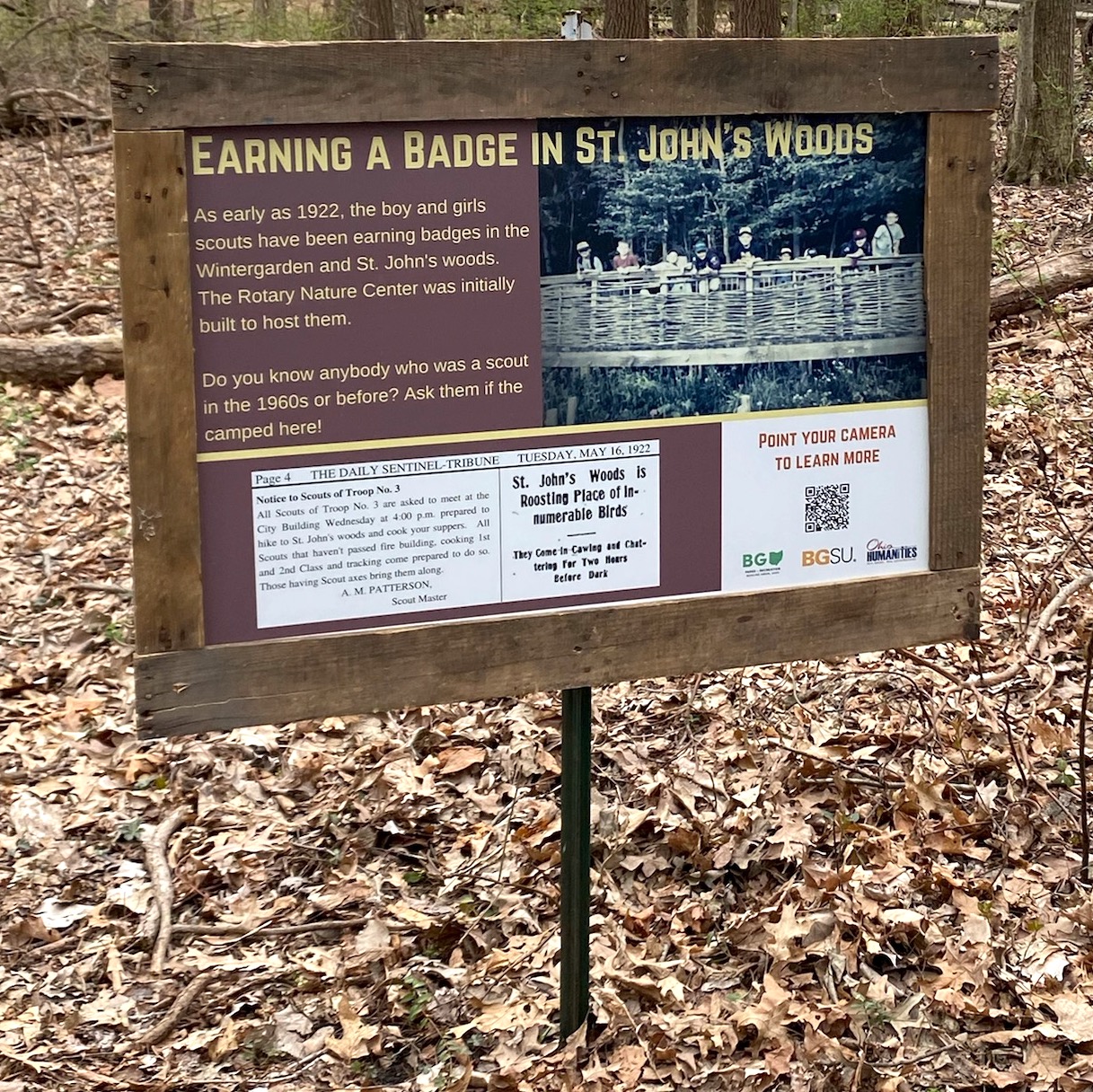
Bowling Green had its own local affiliates of the Boy and Girl Scouts (originally the Camp Fire Girls) within a year of the creation of the national organizations in 1911 and 1912, respectively. The two groups met in the Methodist Episcopalian Church, which was the congregation of the St. John family. St. John’s and Wintergarden Woods were frequent places to do campfires, camping and other training. Explore some coverage in the local press in the following links:
- May 16, 1922, “Notice to Scouts of Troop No. 3,” The Daily Sentinel Tribune, page 4. (open here)
“All scouts that haven’t passed fire building, cooking 1st and 2nd class, and tracking come prepared to do so. Those having Scout axes bring them along.”
- According to the reminiscences of Carlene Creps, neighbor of the Nature Preserve, (“To the Admirers of Wintergarden Park/St John’s Meadows/Woods; Some History,” open here):
Boy scouts used to camp in Wintergarden in 1940’s. They always built a tower of wood poles. We could see it from the barn. In the 1950s, 1960’s and 1970s, girl scout day camp was here as well as the boy scouts.
- August 1, 1957, “Girl Scouts Have Outing at Wintergarden Camp,” The Unique Derrick, page 3.
“Bloomdale. The Girl Scouts, Troop 148, went on an overnight outing at Wintergarden Camp, Bowling Green… A hike and scavenger hunt was the morning program, after the bed rolls were rolled and the tents and area cleaned up… When lunch was over we had an hour of rest, which the leaders needed. The girls were free to do as they pleased.”
Learning More
The history of the Boy and Girl Scouts is an important part of American environmental history. Thousands of children became engaged with the outdoors and developed an interest in wilderness and nature. The organizations emphasized gender stereotypes in their rules, with the boys being encouraged to be adventurous and girls to be homely. Yet, as the last quote suggests, children often pushed the boundaries and had their own ideas of what they should do. To learn more about this, read Nancy C. Unger’s Beyond Nature’s Housekeepers (Oxford University Press, 2012), p. 110-115.
Photo credits
- The article blends the 1922 Daily Sentinel-Tribune article mentioned above, and the headline for an article published on February 16, 1905 in The Wood County Sentinel, page 7. Articles may be retrieved from https://www.wcdpl.org/Local_Newspaper_Digital_Archive.
- Logo of the Scouts, from Wikimedia Commons.
- In the photo, Wolf Den of Pack 422, Bowling Green; photo by Paul Cesarini.
Text, research and content created by Dr. Amílcar Challú, Associate Professor of History, Bowling Green State University. Edited by Carolyn Dailey, history senior.

